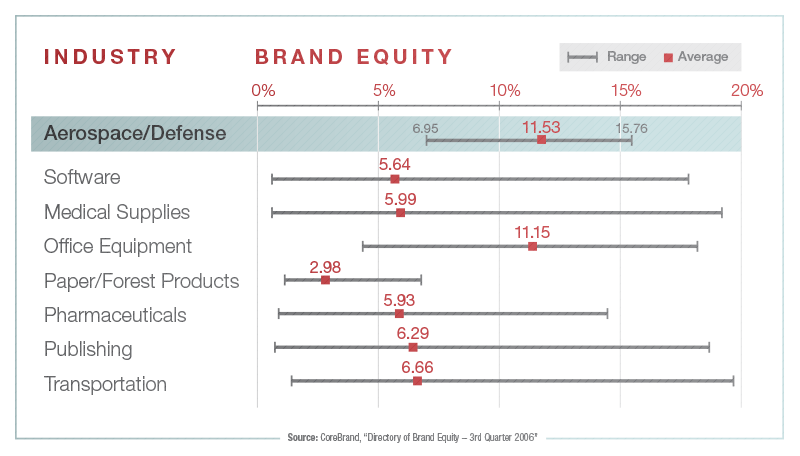Month: July 2016
Audio: Budget-Friendly Marketing
This week, BDN Aerospace Marketing is venturing into the world of downloadable audio content.
In this, our first audio installment, BDN founding partner Kyle Davis and VP of Client Services Lisa Sifuentes share some of their favorite ideas for getting the most out of a tight marketing budget. Senior Designer Nick Markwardt guides the discussion as we touch on topics ranging from developing an annual plan and leveraging digital tools, to identifying and challenging budget-sapping “sacred cows.” In just 15 content-filled minutes, we reveal that good marketing doesn’t have to be expensive marketing.
Play this week’s session below or click here to download the MP3.

Resources mentioned in the show:
Blueprint for Branding

BDN fields a lot of questions about branding, and that’s what inspired this month’s series. If you’ve already determined that you have a branding problem, this blog is for you. Here we outline a process for branding and walk you through what’s required to create or revamp your aerospace business brand strategy.
- Identify and Understand
You’ll need to conduct research in three key focus areas to gather the insights, data and intelligence that will inform your brand strategy.
Focus: Industry and Markets
- Identify relevant trends and opportunities in the industry – it will help ensure that your branding choices are in line with market realities
- Scope your market by size and segments
Tip: To keep your branding project on track, make sure you understand both company goals and sales goals, and how the brand will support them.
Focus: Customers
- Identify existing and potential targets
- Assess levels of awareness of you and your competition
- Understand perceptions of you and your competition
- Find out what customers need and value
- Uncover their pain points
Tip: Ask questions about the decision-making and buying process. Where do your customers get information? How do they research products? What factors most influence their buying decisions?
Focus: Competition
- Identify key competitors
- Determine relative market share
- Define their products and services as they relate to yours
- Assess their brand identity and messaging
Tip: Does everyone’s messaging sound the same? Do visual identities seem similar? This is a great opportunity to look and sound different.
Once all information has been gathered, analyze and synthesize what you have learned and refer to it in making these upcoming critical brand decisions.
- Develop Brand Strategy
Your brand strategy helps establish your company’s best possible position in the market. Think of it as your aerospace and defense sweet spot.
Focus: Positioning
- Above all else, what one thing do you want to be known for?
Tip: Resist the temptation to try and be everything to everyone. It dilutes the brand you are working so hard to create.
Focus: Differentiation
- What one thing really makes you different? How do you add and deliver value to your customers?
Tip: This needs to be more than lip service about “quality” or “passion.” Everyone has those messages. This statement needs to capture the essence of what make you different than every other provider.
Now you begin the process of creatively translating everything you’ve learned so far. All-too-often this is where branding initiatives begin and end. But shortchanging initial steps in the process will leave you with a brand that lacks substance and meaning.
- Define the Brand
Making sure that your definition aligns with your prospects’ needs, preferences and pain points, detail how you want to be perceived and how you want people to feel, think and talk about you.
Focus: Architecture
- Are you a house of brands? A branded house? Or something else? What are the elements of your brand and how do they all work together?
Tip: Keep your structure simple and memorable. Too many companies create brand confusion by naming and designing logos for everything under the sun.
Focus: Personality
- What is your voice and overall sensibility? Is it highly technical? Or is it something more human? Lofty and formal? Or down to earth and approachable?
Tip: You can’t fake this. Whatever you decide to be; be authentic.
Focus: Messaging
- This encompasses your story, value proposition, key supporting messages and a tagline, if appropriate.
Tip: Make it fresh and memorable. Don’t settle for something that is boring and predictable or full of buzzwords. Need help? Download BDN’s Guide to Crushing Your Competition with the Perfect Value Proposition.
Focus: Visual Identity
- From your logo and color palette to your fonts and photos, what does your brand look like?
Tip: Start with a mood board and get incremental buy-in from a few key stakeholders. Always move the discussion away from subjective opinions, have a solid rationale to back your recommendations and stay focused on the real audience.
Focus: Culture
This is all about your company’s core values and how you live and breathe the brand internally.
- How will the brand manifest within your company? What are expectations for employee performance and behavior?
Tip: It’s essential that the CEO believes in, embodies and champions the brand. Your branding project cannot succeed without this executive-level buy-in.
Thanks for reading! If you liked this blog, these other resources about B2B branding may also be of interest.
Bop Design developed a Quick Reference Guide for B2B Branding that includes helpful definitions, dos and don’ts, and more.
This Strategic Marketing Roadmap for small- to medium-size businesses emphasizes the branding process. Shout out to Marketing Mo for this in-depth resource.
Looking for expert assistance? Download BDN’s Guide to Selecting a Professional Marketing Firm.
Realize the Full Value of Your Aerospace Business Brand

Taking on a branding or rebranding program for your aerospace business is not for the faint of heart. Brand work requires discipline, focus, commitment and, above all, honesty.
In our last edition of the Flight Manual we listed 10 warning signs that you might have a weak brand. This week, courtesy of Lippincott, we are providing a list of questions to jump start the branding discussion internally.
If you think you have a branding problem and want to take steps to address it internally, we suggest starting with a very small team of strategically minded leaders who are willing to take an unflinching look at your business and answer these questions. There is no room for ego or living in the past, and this is not a job for a large committee.
This more detailed assessment will not be easy, but it is a necessary step in further assessing the health of your brand and getting internal alignment on how or if to proceed, which is critical.
Are you faced with skeptics who argue that branding is not important to aerospace and defense businesses? This data from the Harvard Business Review speaks for itself.

Bear in mind that these questions are just a starting point. Audience research is advisable to validate your internal assumptions and get a true picture of how you are perceived.
- Does our reputation immediately put us on our customers’ mental short lists for their next big orders or programs? How do we know one way or another? If we don’t know, how do we plan to find out?
- Are we on our customers’ preferred supplier lists? If so, where do we place, and how does that compare to our place last year or two years ago? If we’re not on the list, why is that and what do we expect to do about it?
- Does our brand help us to hire world-class talent? What does our brand stand for with potential recruits? Do we even know? For that matter, what do our employees think about our brand — or about any of our product brands? Are they proud of the name—or ashamed of it? Do they encourage or discourage others to join the company?
- Could our brand help us win a bid if reputation were the deciding factor? If not, why not? Why might our competitor’s brand help them win instead?
- What does our brand say about us to potential new customers? Does our brand give us entrée to expand into adjacent markets? To take on higher value-added roles such as consulting services? Or are we forever painted as one particular kind of company, unable to do anything different?
- To what extent is our brand being eclipsed as our big customers or channel partners consolidate and become better-known to end customers and Wall Street?
- What do we need to do to keep our brand from disappearing?
- Do investors really know us? How does Wall Street describe us? How does that square with how we see ourselves?
- Do we have the right mix of brands to go to market? Do our brands fit together logically? Are we supporting and spending on the right brands?
- How smart are we about our own brand? What should our brand stand for? Can we describe our brand strategy in a 20-second elevator pitch? What’s different about it? What does it contribute to the bottom line? Which customer touchpoints make the biggest difference to our brand?
- Are we actually living the brand? Do our employees know how to deliver our brand? Do they have the tools to do so?
Source: Lippincott originally published these 10 “Call to Action” questions in an excellent resource called “The Rise and Rise of the B2B Brand.”
Up Next
Moving Ahead: Your Blueprint for Branding
Also
If you liked this blog you may also want to read about the “5 Branding Myths that are Hurting Your Aerospace Business.”
